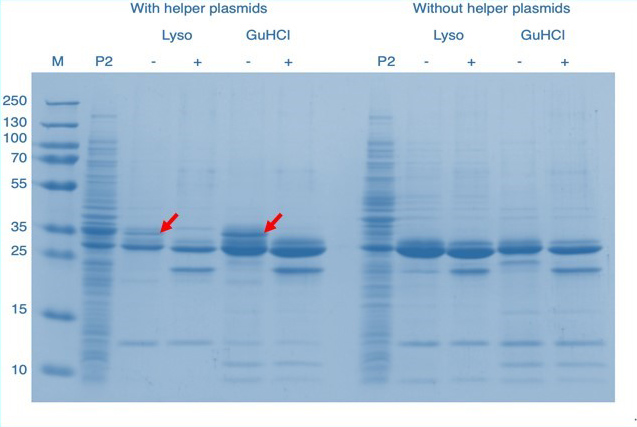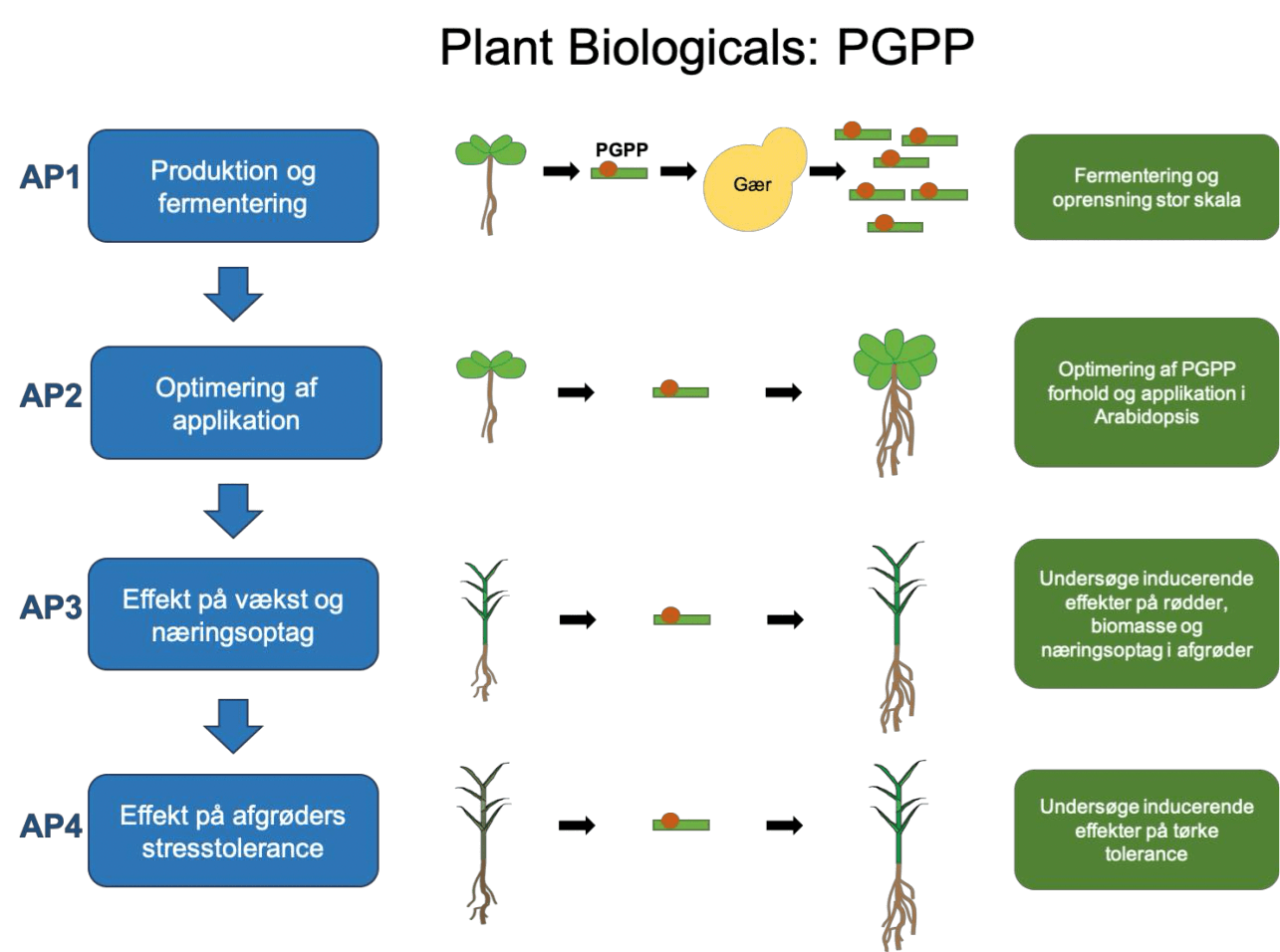Plant Growth Promoting Peptides (PGPPs) – production and test of nutritional uptake
In this project we produce PGPPs and explore if these bio-friendly peptides have crop stimulating activity, that can promote sustainable production.
Previously, PGPPs have been synthesized by processes relying on expensive chemical components, providing low yields, only sufficient for research. For this reason, the many practical application prospects for crop production have not yet been explored in trial settings representing production conditions.
In the first year of the project, we have managed to establish a heterologous Escherichia coli expression system that allows for stable peptide production and activation by sulfonation. In these bacterial strains peptides are secreted, simplifying purification of stable preparations. An Arabidopsis plant-assay for determination of growth stimulation has been established and is currently optimized for better consistency.
In the second year of the project, 2024, we will conduct growth and nutrition uptake trials, and determine if treated tomato as well as barley crops become more productive. These results will be reported on this web site at the beginning of 2025 and published in a scientific journal.

Fig. 1. Gel of stained cell proteins after electrophoretic separation. An E. coli strain expressing the Plant Growth Promoting Peptide PSY (P2) as a protein fusion, with and without additional helper plasmids facilitating sulfonation. In this experiment, the PSY peptide extraction was performed using either Lysozyme (Lyso) or guanidine hydrochloride (GuHCl). Molecular weights of a reference marker (M) are indicated to the left in kDa. It is concluded that the 35 kDa PSY fusion protein (red arrows) is only expressed in cell constructions including helper plasmids and that the tested extraction methods enable purification of the fusion constructs. Addition of TEV protease, indicated with ‘+’, releases the PSY peptide from the fusion protein, thereby enabling further purification of the mature PSY peptide, that is too small to be visualized on this type of gel. These results were confirmed in a Western blot using PSY-specific antibodies.

Fig. 2. Overview of research activities in the project “Plant Growth Promoting Peptides (PGPPs) – production and test of nutritional uptake”. The overview text and the explanation below are in Danish.
Projektet ”Naturlige vækststimulerende plantepeptider - produktion og test på næringsstofoptag” består af fire arbejdspakker (AP1-4), som er præsenteret i Fig. 2. Arbejdspakkeoverskrifter er givet i blå tekstfelter og indholdet er skitseret grafisk samt forklaret i grønne tekstfelter. I AP1 var det planlagt at benytte en gærstamme til fremstilling af peptider, som vist sig at være ustabil og derfor blev der konstrueret en bakteriestamme, som tillader peptid sulfonering, vist som en orange markering på peptiderene, præsenteret som grønne rektangler. Peptidernes plante stimulerende aktivitet kontrolleres i test med Arabidopsis (AP2) modelplanter og efterfølgende afprøves de rodstimulerende egenskaber (AP3) og tørke tolerance (AP4) i afgrøde planter, så som byg. Projektet er støttet af Promilleafgiftsfonden for Landbrug.
Funded by: Promilleafgiftsfonden for landbrug
Period: 2022-2024

Anja Thoe Fuglsang
Project leader

